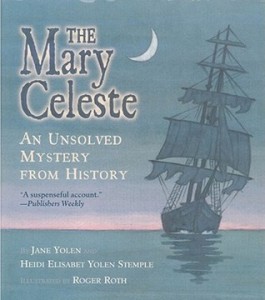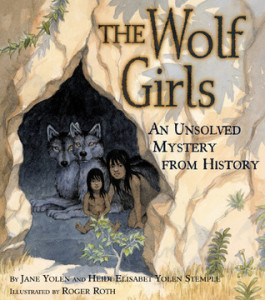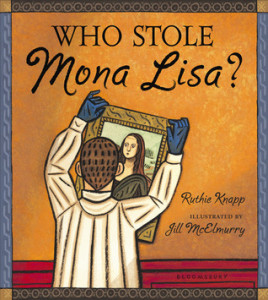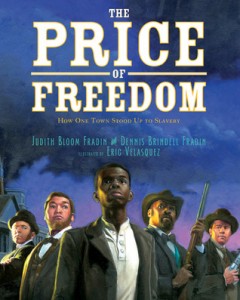Nonfiction Picture Book Wednesday
Nonfiction Picture Book Wednesday is hosted by Kid Lit Frenzy and was started to help promote the reading of nonfiction texts. Most Wednesdays, we will be participating and will review a nonfiction text (though it may not always be a picture book).
Be sure to visit Kid Lit Frenzy and see what other nonfiction books are shared this week!
The Mary Celeste: An Unsolved Mystery from History
Author: Jane Yolen and Heidi Elisabet Yolen Stemple
Illustrator: Roger Roth
Published July 1st, 2002 by Simon & Schuster Books for Young Readers
Goodreads Summary: The Mary Celeste was discovered adrift on the open sea by another ship in 1872 — with no sign of captain or crew. What happened? Did the crew mutiny? Were they attacked by pirates? Caught in a storm? No one ever found out.
Inside this book are the clues that were left behind and the theories of what people think happened aboard that ship. Become a detective, study the clues, and see if you can help solve this chilling mystery from history.
My Review: This is the final book in the Unsolved Mystery from History series and I think it may be my favorite yet. Like The Wolf Girls, I had not heard about the Mary Celeste before this book, but this mystery was just so enthralling! A crew that just disappears?!?! How?!?! After reading the book, I spent hours online reading about the Mary Celeste and it is so interesting. There are so many websites and opinions and theories—all which would be so much fun to share with students.
Teacher’s Tools for Navigation: Like the other books in this series, I would love to see these books used in classrooms (history or language arts/reading). These books promote studying history, asking questions, inquiry, and vocabulary. Each book begins with an introduction about a young girl who enjoys unsolved mysteries from history and then the books are set up like her case notebook. Each page of the case notebook includes a narrative nonfiction section, an informational nonfiction section where facts about the story are explained even more in detail, and then there are vocabulary words from the two sections defined for the reader. Finally, in the back of the books the different theories about what could be the answer to the unsolved mystery are shared and briefly discussed. The set up of this book leads to infinite possibilities of being used in the classroom. Students could debate, write research papers, could do their very own case notebook about a different mystery, etc. Another option is to get all of the Unsolved Mystery from History books and have students get into lit circle groups and have each group read a different mystery then research and share. The other books in the series are about the Salem Witch Trials, the Wolf Girls, and Roanoke.
Discussion Questions: Which of the theories do you think happened?; Do you trust Captain Morehouse? Why or why not?; One theory mentions a kraken. Do you think sea monsters exist?; Study the weather of the Pacific during the time period the ship disappeared. Is weather an option for the crew’s disappearance?
We Flagged: Narrative Nonfiction “The last place the men looked was in the ship’s hold where her cargo- 1,700 barrels of raw alcohol- was well stowed. Not a single barrel had been opened. All in all, Deveau and Wright looked around the Mary Celeste for over half an hour. They found no sign of anyone on board, no signs of struggle.”
Informative Nonfiction “The cargo was alcohol stored in red oak barrels. Red oak is a porous wood that lets alcohol fumes escape. When the barrels were examined, some of the alcohol was found to be gone, but that was entirely due to evaporation. According to reports, the barrels were “in good order” and not “in any way injury.” Besides, the alcohol was was raw alcohol which was to be used for fortifying Italian wines. Anyone drinking it unprocessed would not become drunk, but would rather lapse into a coma or die. Only one hatch was found open, but there was no sign of smoke damage or an explosion in the unventilated hold.”
Vocabulary “Hold: the area inside the ship where cargo is stored; Cargo: the goods being transported by the ship” (p. 20-21)
Read This If You Loved: The other Unsolved Mystery from History books
Recommended For:
I’m so sad that I am done reviewing the Unsolved Mystery from History series, but I hope you have enjoyed learning about them as I enjoyed reading them.










